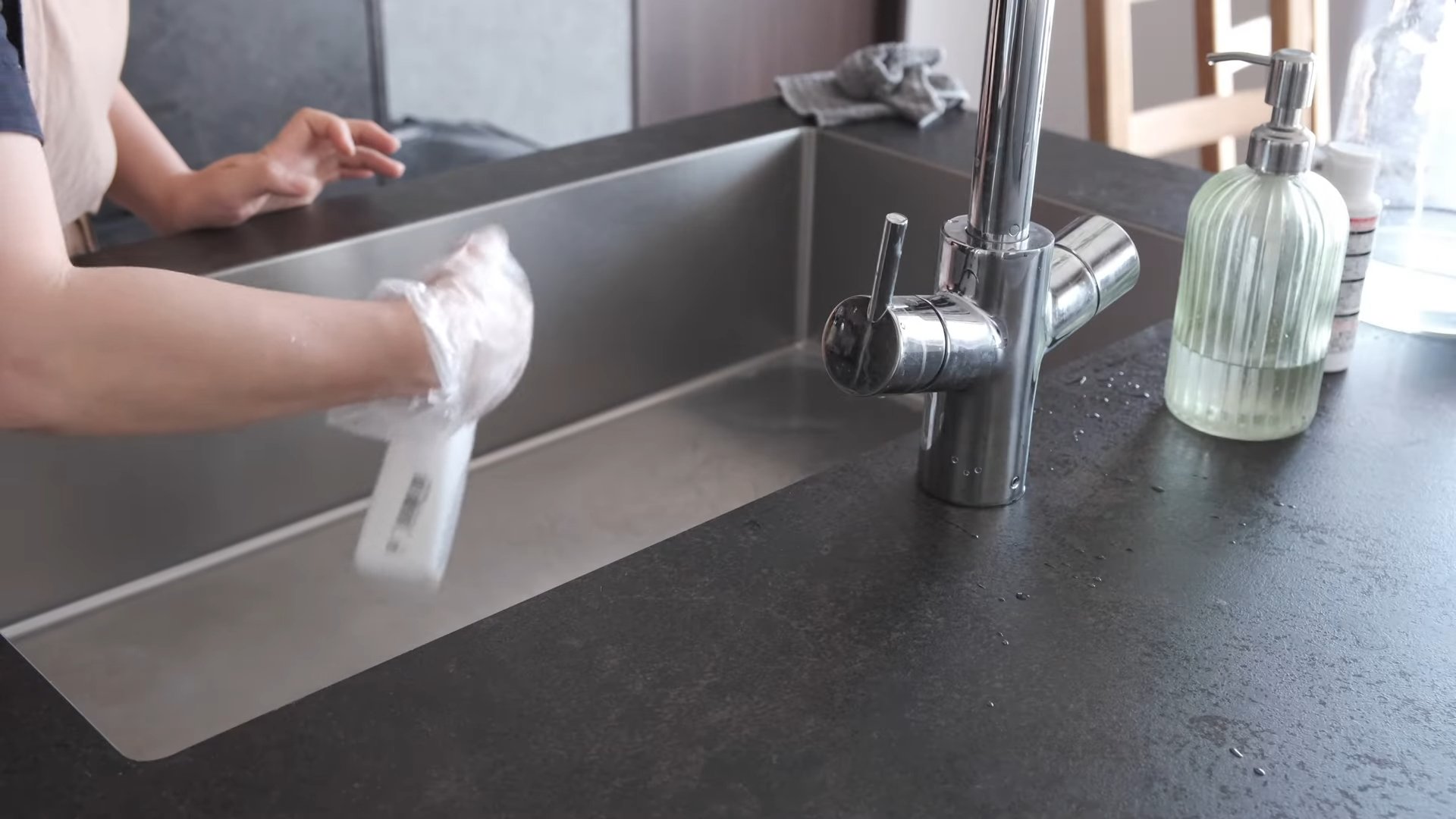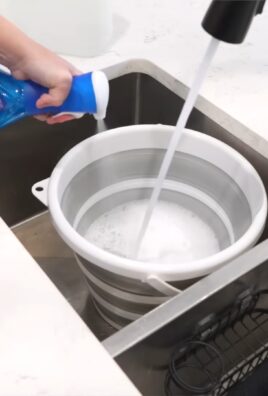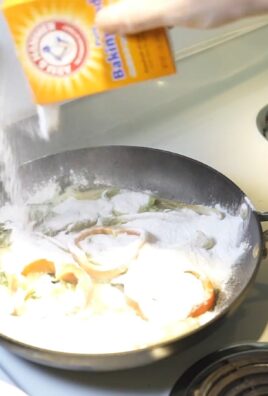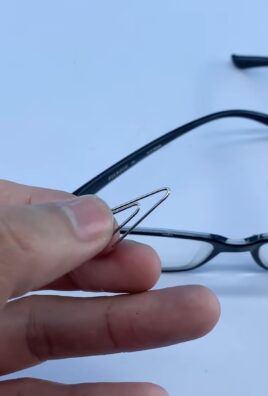Prevent Mold Growth in your home garden and say goodbye to unsightly, potentially harmful patches! Have you ever lovingly nurtured your seedlings, only to discover a fuzzy, unwelcome guest crashing the party? Mold can be a real heartbreaker for any gardener, turning your green dreams into a damp, musty nightmare. But don’t despair! I’m here to share some simple, effective DIY tricks to keep your precious plants safe and thriving.
For centuries, gardeners have battled the persistent threat of mold. From ancient civilizations cultivating herbs to modern-day urban farmers, the struggle is real. Mold thrives in damp, poorly ventilated environments, making our indoor gardens particularly vulnerable. But understanding the conditions that foster mold growth is half the battle.
Why is it so important to prevent mold growth? Beyond the aesthetic issues, mold can seriously impact the health of your plants, hindering their growth and even leading to their demise. Plus, some molds can trigger allergies and respiratory problems in humans, making it crucial to maintain a healthy environment for both you and your leafy friends. In this article, I’ll walk you through easy-to-implement DIY solutions, using common household items, to keep your garden mold-free and flourishing. Let’s get started!

DIY Guide: Conquer Mold and Keep Your Home Fresh!
Okay, let’s talk mold. It’s the bane of every homeowner’s existence, right? That fuzzy, sometimes smelly, unwelcome guest that pops up in damp corners and makes you want to scream. But don’t worry! I’m here to arm you with the knowledge and DIY power to fight back and keep your home mold-free. This isn’t just about cleaning up existing mold (though we’ll touch on that), it’s about preventing it from ever taking hold in the first place.
Understanding the Enemy: What is Mold and Why Does it Love My House?
Before we dive into the nitty-gritty, let’s understand what we’re dealing with. Mold is a type of fungus that thrives in damp, humid environments. It reproduces through tiny spores that are everywhere – indoors and outdoors. The problem arises when these spores land on a surface with enough moisture and organic material (like wood, drywall, or even dust) to feed on. Then, BAM! Mold city.
Key factors that contribute to mold growth:
* Moisture: This is the big one. Leaks, condensation, high humidity – all create the perfect breeding ground.
* Organic Material: Mold needs something to eat. Dust, dirt, wood, paper, even some types of paint can provide sustenance.
* Temperature: Mold generally prefers temperatures between 40°F and 100°F, which, unfortunately, is the temperature range of most homes.
* Poor Ventilation: Stagnant air allows moisture to build up, creating a humid environment.
Phase 1: Identifying and Addressing Moisture Sources
The first step in preventing mold is to tackle the root cause: moisture. Think of it like this: you can clean up mold all day long, but if you don’t fix the leak that’s causing it, it’s just going to keep coming back. Trust me, I’ve been there!
1. Inspect for Leaks: This is detective work time! Grab a flashlight and get ready to crawl around.
* Plumbing: Check under sinks, around toilets, and behind washing machines for any signs of leaks. Look for water stains, drips, or even just a musty smell.
* Roof: Inspect your roof for damaged shingles or flashing. Water stains on your ceiling are a telltale sign of a roof leak. If you’re not comfortable climbing on your roof, call a professional.
* Windows and Doors: Check the seals around windows and doors for cracks or gaps. Water can seep in during rainstorms.
* Foundation: Look for cracks in your foundation walls. Water can seep in from the ground, especially after heavy rain.
2. Fix Leaks Immediately: Once you’ve identified a leak, don’t delay! The longer you wait, the more damage it will cause.
* Minor Leaks: Small plumbing leaks can often be fixed with a wrench and some plumber’s tape. Caulking can seal gaps around windows and doors.
* Major Leaks: For more serious leaks, like roof or foundation leaks, it’s best to call a professional.
3. Address Condensation: Condensation occurs when warm, moist air comes into contact with a cold surface.
* Bathrooms: Always run the exhaust fan during and after showers to remove moisture. If you don’t have an exhaust fan, open a window.
* Kitchens: Use the range hood when cooking to vent steam and odors.
* Windows: If you notice condensation on your windows, try using a dehumidifier or improving ventilation. You might also consider upgrading to double-paned windows.
4. Control Humidity Levels: Aim for a humidity level between 30% and 50%. You can use a hygrometer (a humidity meter) to monitor the humidity in your home.
* Dehumidifiers: These are great for removing excess moisture from the air, especially in damp basements or bathrooms.
* Air Conditioners: Air conditioners also help to remove moisture from the air.
* Ventilation: Opening windows and doors (when the weather permits) can help to improve ventilation and reduce humidity.
Phase 2: Improving Ventilation and Airflow
Good ventilation is crucial for preventing mold growth. It helps to circulate air, remove moisture, and prevent stagnant air from creating a humid environment.
1. Open Windows and Doors: Whenever possible, open windows and doors to allow fresh air to circulate. Even a few minutes a day can make a difference.
2. Use Fans: Fans can help to circulate air and prevent moisture from building up.
* Ceiling Fans: Run ceiling fans to keep air moving.
* Portable Fans: Use portable fans to circulate air in damp areas, such as bathrooms or basements.
3. Ensure Proper Ventilation in Bathrooms and Kitchens: As mentioned earlier, exhaust fans in bathrooms and range hoods in kitchens are essential for removing moisture. Make sure they are working properly and use them regularly.
4. Clean Air Ducts: Over time, dust and debris can accumulate in your air ducts, providing a food source for mold. Consider having your air ducts professionally cleaned every few years.
5. Space Furniture Away from Walls: Leaving a few inches of space between furniture and walls allows air to circulate and prevents moisture from getting trapped.
Phase 3: Cleaning and Disinfecting
Regular cleaning and disinfecting can help to remove mold spores and prevent them from growing.
1. Clean Regularly: Dust and vacuum regularly to remove mold spores and other organic material.
2. Use Mold-Killing Cleaners: When cleaning bathrooms and kitchens, use cleaners that are specifically designed to kill mold and mildew.
3. Bleach Solution: A solution of bleach and water (1 part bleach to 10 parts water) can be used to disinfect surfaces that have been affected by mold. Important: Always wear gloves and eye protection when working with bleach. Never mix bleach with ammonia or other cleaning products, as this can create toxic fumes. Ensure the area is well-ventilated.
4. Vinegar: White vinegar is a natural disinfectant that can also kill mold. Spray vinegar onto the affected surface and let it sit for an hour before wiping it clean.
5. Baking Soda: Baking soda is a mild abrasive that can help to remove mold stains. Mix baking soda with water to form a paste and apply it to the affected surface. Let it sit for a few minutes before scrubbing it clean.
6. Dry Thoroughly: After cleaning, make sure to dry the area thoroughly to prevent mold from returning. Use a clean cloth or towel to wipe down surfaces. You can also use a fan to speed up the drying process.
Phase 4: Choosing Mold-Resistant Materials
When renovating or building, consider using mold-resistant materials.
1. Mold-Resistant Drywall: This type of drywall is treated with a fungicide that inhibits mold growth.
2. Mold-Resistant Paint: Mold-resistant paint contains additives that prevent mold from growing on the painted surface.
3. Proper Insulation: Proper insulation can help to prevent condensation and reduce the risk of mold growth.
4. Consider Tile or Other Non-Porous Materials: In areas prone to moisture, like bathrooms and kitchens, consider using tile or other non-porous materials that are less susceptible to mold growth.
Phase 5: Dealing with Existing Mold (Small Areas Only!)
If you already have mold, don’t panic! Small areas of mold (less than 10 square feet) can often be cleaned up yourself. However, if the mold is widespread or you have health concerns, it’s best to call a professional mold remediation company.
1. Safety First: Before you start cleaning, protect yourself by wearing gloves, eye protection, and a respirator or dust mask.
2. Isolate the Area: Seal off the affected area with plastic sheeting to prevent mold spores from spreading to other parts of your home.
3. Clean the Mold: Use one of the cleaning solutions mentioned above (bleach solution, vinegar, or baking soda paste) to clean the mold. Scrub the affected surface thoroughly to remove all traces of mold.
4. Dry Thoroughly: After cleaning, dry the area thoroughly to prevent mold from returning.
5. Dispose of Contaminated Materials: Dispose of any contaminated materials, such as sponges, rags, or drywall, in sealed plastic bags.
Important Considerations:
* Health Concerns: Mold can cause a variety of health problems, including allergies, asthma, and respiratory infections. If you are experiencing any health problems that you suspect may be related to mold exposure, consult a doctor.
* Professional Help: If you have a large area of mold (more than 10 square feet), or if you are not comfortable cleaning it yourself, it’

Conclusion
So, there you have it! This simple yet incredibly effective DIY trick to prevent mold growth is more than just a cleaning hack; it’s an investment in your health, your home, and your peace of mind. We’ve walked you through the steps, explained the science, and hopefully, dispelled any doubts you might have had.
Why is this a must-try? Because mold isn’t just unsightly; it’s a potential health hazard. It can trigger allergies, exacerbate asthma, and even lead to more serious respiratory problems. By proactively preventing mold growth, you’re creating a healthier living environment for yourself and your loved ones. And let’s be honest, who wants to spend their weekends scrubbing away stubborn mold stains when you can prevent them from forming in the first place?
This DIY solution is also incredibly cost-effective. You’re likely to have most of the ingredients already in your pantry or cleaning supplies. Compared to expensive commercial mold removers, which often contain harsh chemicals, this method is gentle, natural, and budget-friendly.
But the benefits don’t stop there. This trick is versatile! Feel free to experiment with variations to suit your specific needs and preferences. For example:
* Essential Oil Boost: Add a few drops of tea tree oil, lavender oil, or eucalyptus oil to your solution for an extra antifungal kick and a pleasant scent. Tea tree oil is particularly potent against mold, while lavender and eucalyptus offer calming and refreshing aromas.
* Vinegar Power-Up: For areas prone to heavy mold growth, consider increasing the vinegar concentration in your solution. A 50/50 mix of vinegar and water can be incredibly effective.
* Citrus Zest: Infuse your vinegar with citrus peels (lemon, orange, or grapefruit) for a week or two before using it. This will not only add a refreshing scent but also enhance the cleaning power of the vinegar. The citric acid in the peels acts as a natural disinfectant.
* Targeted Application: Use a spray bottle for larger areas or a cotton swab for small, hard-to-reach spots. This allows for precise application and minimizes waste.
We strongly encourage you to give this DIY trick a try. You’ll be amazed at how easy it is to incorporate into your regular cleaning routine. Imagine the satisfaction of knowing you’re actively protecting your home from the harmful effects of mold.
Don’t just take our word for it! We’re eager to hear about your experiences. Share your results, variations, and any tips you discover in the comments section below. Let’s build a community of mold-fighting champions! Together, we can create healthier, happier homes, one DIY trick at a time. Remember, consistent application is key to long-term success in your quest to prevent mold growth. So, grab your supplies, get cleaning, and let us know how it goes!
Frequently Asked Questions (FAQ)
What exactly causes mold to grow in my home?
Mold thrives in damp, humid environments. Common causes include leaky pipes, poor ventilation, condensation, and water damage from floods or spills. Mold spores are everywhere, but they only start to grow when they find a suitable environment with moisture and a food source (like drywall, wood, or fabric). Addressing the underlying moisture problem is crucial to effectively prevent mold growth.
Is vinegar really effective at killing mold?
Yes, vinegar is a natural and effective mold killer. White distilled vinegar contains acetic acid, which has been shown to kill approximately 82% of mold species. It’s a safer and more environmentally friendly alternative to harsh chemical cleaners. However, it’s important to note that vinegar may not be as effective on all types of mold, and it may take multiple applications to completely eradicate the problem. For severe mold infestations, professional remediation may be necessary.
How often should I apply this DIY mold prevention solution?
The frequency of application depends on the humidity levels in your home and the specific areas you’re targeting. In general, it’s recommended to apply the solution every 1-2 weeks in areas prone to mold growth, such as bathrooms, kitchens, and basements. During periods of high humidity, you may need to apply it more frequently. Regular cleaning and ventilation are also essential for preventing mold growth.
Can I use this solution on all surfaces?
While this DIY solution is generally safe for most surfaces, it’s always a good idea to test it on a small, inconspicuous area first to ensure it doesn’t cause any discoloration or damage. Avoid using it on porous surfaces like unsealed grout or unfinished wood, as the vinegar can penetrate and potentially cause staining. For delicate surfaces, consider diluting the solution further or using a gentler cleaning method.
What precautions should I take when using this DIY mold prevention solution?
Although this solution is relatively safe, it’s still important to take some basic precautions. Wear gloves to protect your skin from irritation, and avoid spraying the solution directly into your eyes. Ensure adequate ventilation in the area you’re cleaning, especially if you’re using a strong vinegar solution. If you have any respiratory sensitivities, consider wearing a mask to avoid inhaling the fumes.
What if I have a severe mold problem?
If you have a large or widespread mold infestation (more than 10 square feet), it’s best to consult with a professional mold remediation company. Severe mold problems can be difficult and dangerous to handle on your own, and professionals have the expertise and equipment to safely and effectively remove the mold. They can also identify and address the underlying moisture problem to prevent mold growth from recurring.
How can I improve ventilation in my home to prevent mold?
Good ventilation is crucial for preventing mold growth. Here are some tips:
* Open windows and doors regularly to allow fresh air to circulate.
* Use exhaust fans in bathrooms and kitchens to remove moisture after showering or cooking.
* Ensure your HVAC system is properly maintained and that the filters are clean.
* Consider using a dehumidifier in damp areas like basements.
* Avoid overcrowding rooms with furniture, as this can restrict airflow.
Is baking soda a good addition to this DIY solution?
Baking soda is a natural deodorizer and mild abrasive that can be helpful in cleaning mold. You can add a tablespoon of baking soda to your vinegar and water solution for extra cleaning power. Alternatively, you can make a paste of baking soda and water and apply it directly to moldy areas. Let it sit for a few minutes, then scrub and rinse. Baking soda helps to absorb moisture and inhibit mold growth.
Can I use bleach instead of vinegar?
While bleach is a strong disinfectant, it’s not always the best choice for mold removal. Bleach can kill surface mold, but it doesn’t penetrate porous materials to kill the mold roots. It can also be harmful to your health and the environment. Vinegar is a safer and more effective option for most mold problems. If you do choose to use bleach, be sure to dilute it properly, wear protective gear, and ventilate the area well. Never mix bleach with ammonia, as this can create toxic fumes.
How do I identify mold in my home?
Mold can appear in various colors, including black, green, brown, and white. It often has a musty or earthy odor. Look for signs of mold in damp areas, such as bathrooms, kitchens, basements, and around windows and pipes. Common signs include visible mold growth, water stains, peeling paint, and warped wood. If you suspect you have mold, it’s important to address the problem promptly to prevent mold growth and protect your health.




Leave a Comment